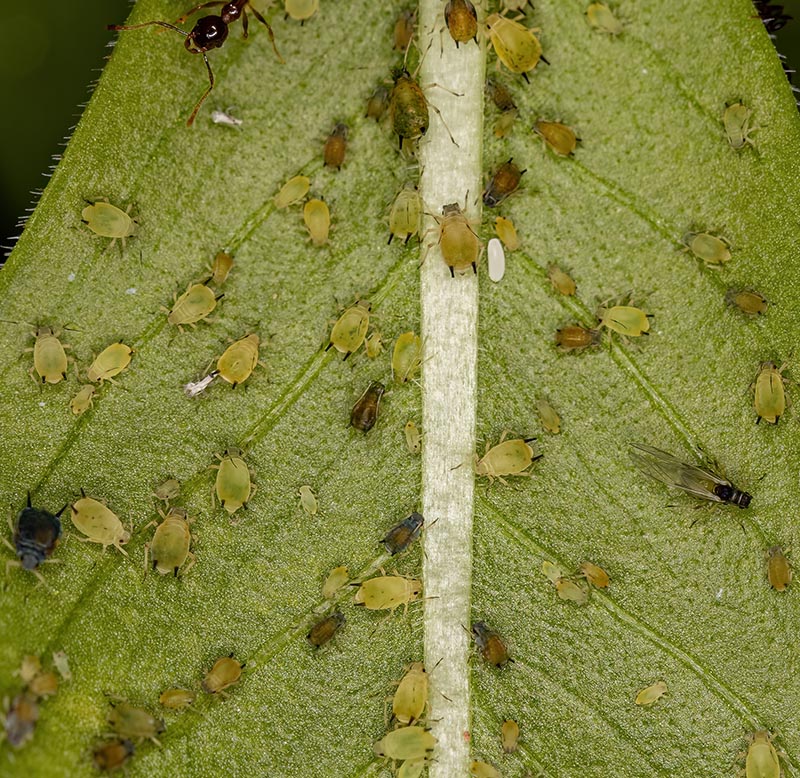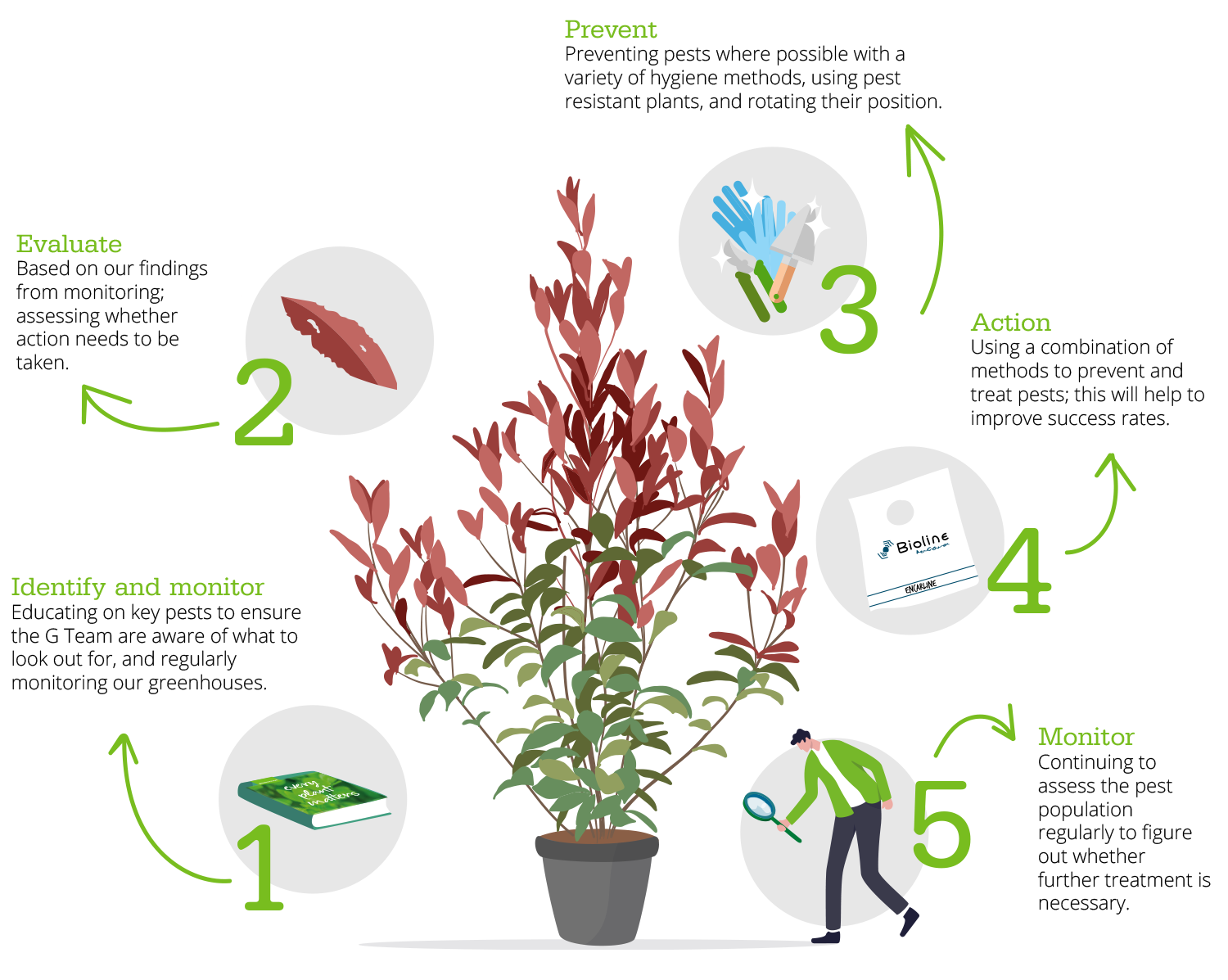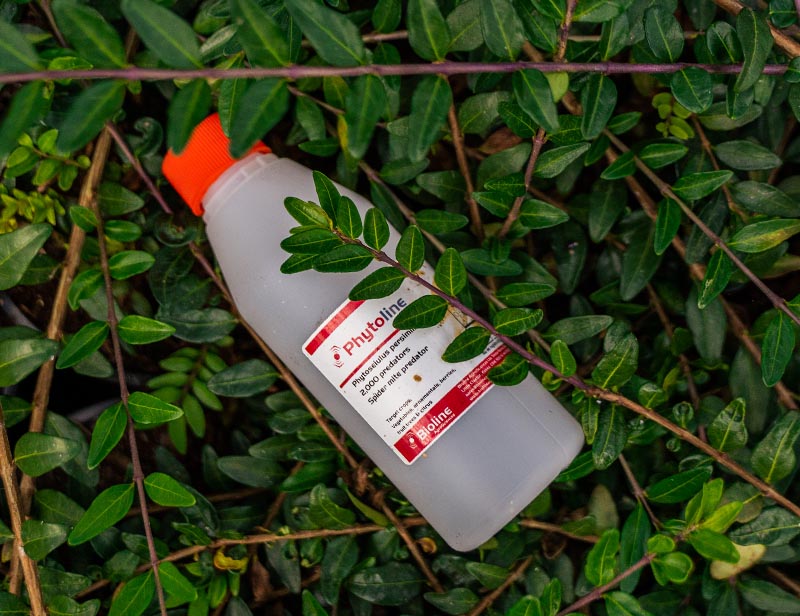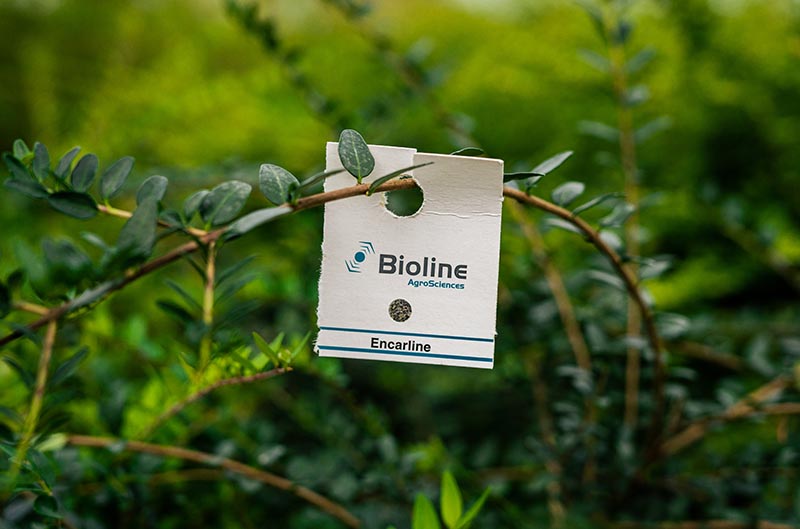Biological Pest Control
An environmentally friendly approach to pest control across our nurseries
Biological pest control is the use of living organisms to suppress or eradicate pest populations. With records dating back to around 4,000 years ago—such as the control of rodents in Egypt—the practice of biological pest control has been carried out in various ways around the world, for many years.
The specific strategy of biological pest control is an excellent, environmentally friendly alternative to using chemical methods of control, such as pesticides, insecticides and fungicides; these chemical methods can lead to health issues in workers and consumers, have a harmful effect on wildlife and biodiversity, and cause unintentional damage to plants. Over time, pests can become resistant to chemicals if they are frequently exposed to them; this can lead to their effectiveness being drastically reduced.
How do biological pest control methods work?
Living organisms for biological pest control are split into three categories: natural predators, parasitoids and pathogens. These biological methods are based on naturally occurring organisms, which only cause harm to the pest concerned. Otherwise known as “natural enemies”, these biological control methods are introduced to greenhouses, crop fields and gardens, in order to breed and reduce pests to controlled levels. Predators, including ground beetles, lady birds and mites, reduce prey population growth through consumption—a method known as top-down control. Parasitoids include a variety of flies and wasps which, in their larval stage, feed on the insect host and this action eventually leads to its death. Pathogens are disease-causing organisms—such as nematodes, fungi, viruses and bacteria—which infect and kill their host.
Pests—such as aphid, whitefly and vine weevil—can cause a great deal of physical and aesthetic damage to plants. Pests eat foliage and burrow holes in stems, roots or fruit, and more devastatingly, they have the capacity to transmit infections to plants. With this in mind, it’s essential to stay vigilant and actively keep them at bay, whilst taking our environment into consideration.

Group of small green aphids

What are the benefits of biological pest control?
Chemicals are widely known to be damaging towards our environment and biodiversity, whilst biological pest control methods have an abundance of benefits. Biological pest controls are either low or non-toxic, so the safety of both workers and consumers is not compromised. Chemicals often leave residues on plants and cause damage. Whereas, biological methods are natural and degrade quickly, without leaving residues.
Resistance is a big problem in chemical control, as pests have adapted to many well-known pesticides and fungicides over the years. A benefit of biological control is the slowing down of resistance, due to the combination of multiple methods, which requires the pest to find a new way to fight the predator, parasitoid or pathogen; the pest is continuously kept on its toes.
Biological methods can be more effective than chemicals in a number of ways. Chemicals should be applied to the correct areas of plants to ensure the pest comes into contact with it; however, many biological methods can move around to locate the pest—even those which are hiding. Nematodes are an excellent example of this, being able to hunt out pests, such as slugs and vine weevil larvae.
Sustainability is a further benefit of biological pest control methods. Once natural enemies are introduced to the environment, they are able to multiply and control the pest population with minimal further action.

Phytoline P (Phytoseiulus persimilis)
Which biological pest control methods do we use in our nurseries?
We are currently trialling a range of different biological pest control methods throughout our nurseries to tackle pests such as spider mite, vine weevil and whitefly.
Phytoline P (Phytoseiulus persimilis) has been introduced to actively hunt and attack all stages of various spider mites—such as the glasshouse spider mite, red spider mite and two spotted spider mite. Phytoline P is a small orange-red predatory mite that feeds on all stages of the spider mite life cycle. With its faster life cycle, Phytoline P is able to rapidly reduce the spider mite population, by consuming up to five adult spider mites and 20 larvae each day.

Phytoline P (Phytoseiulus persimilis)
In addition to Phytoline P, Anderline AA (Amblyseius andersoni) is used to tackle spider mite within our greenhouses. These slow release sachets work differently to Phytoline P, as the predatory mite releases over a period of six weeks and is able to establish with little or no spider mites present. As Anderline AA is naturally occurring in the UK, it’s able to survive during winter and repopulate in spring. The predatory mite helps to biologically control pests by feeding on spider mite eggs and adults, as well as whitefly eggs.
Vine weevil is found to be one of the most serious pests within ornamental greenhouses, so we have recently introduced Nemasys L (Steinernema kraussei) to our nurseries. Nemasys L is a pathogenic nematode worm that hunts out vine weevil larvae within compost and weevil grubs, which are easier to spot. The nematode enters the weevil larvae and releases a lethal bacteria, resulting in the death of the host within just a few days. Whilst the nematode is actively hunting out weevil larvae and grubs, it is able to rapidly reproduce to increase its effectiveness further.

Anderline AA (Amblyseius andersoni)

Encarline F (Encarsia formosa)
Encarline F (Encarsia formosa) is one of the earliest forms of biological control; it’s introduced as pupae on cards which are hung within the greenhouse, or as loose black scales. Encarline F is a parasitic wasp that lays eggs inside the whitefly larvae— eventually leading to the whitefly’s death. Once eggs have been laid inside the whitefly larvae, Encarsia formosa will grow inside the larvae and gradually eat its way out, before searching for more whitefly, using its efficient flying pattern.
Our aim as a company is to continually increase our biological control methods, whilst reducing the chemical methods we use across our nurseries. We are trialling different products regularly and reviewing our results in depth to evaluate success, and this approach, as well as the dedication of our G Team, will help us to reach our goal of reducing our pesticide use by 50%.
If you’d like to find out more about our sustainability initiatives, please get in touch or visit our Sustainability page.

